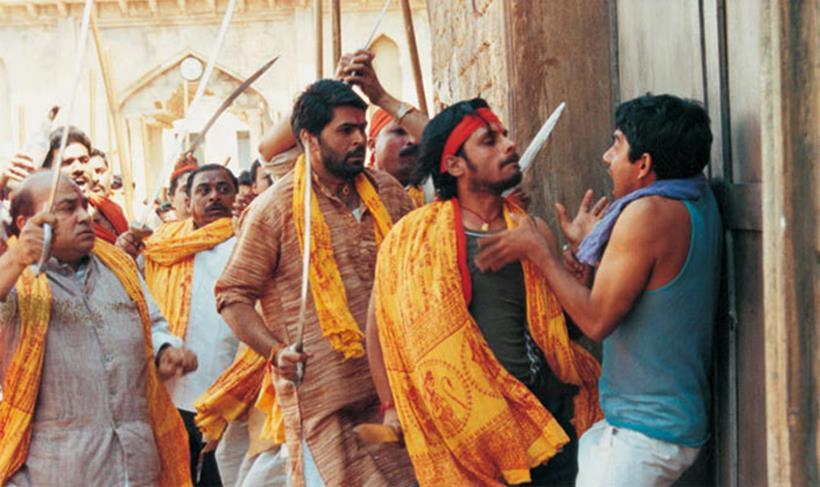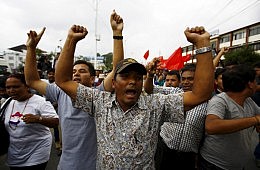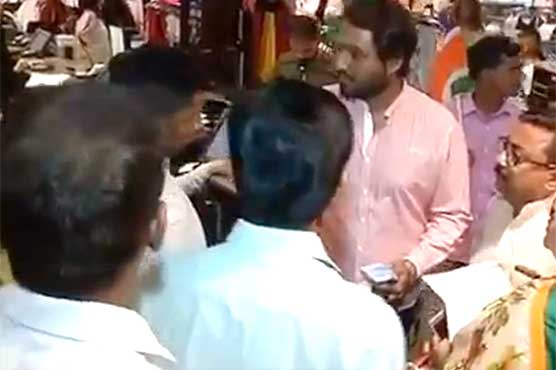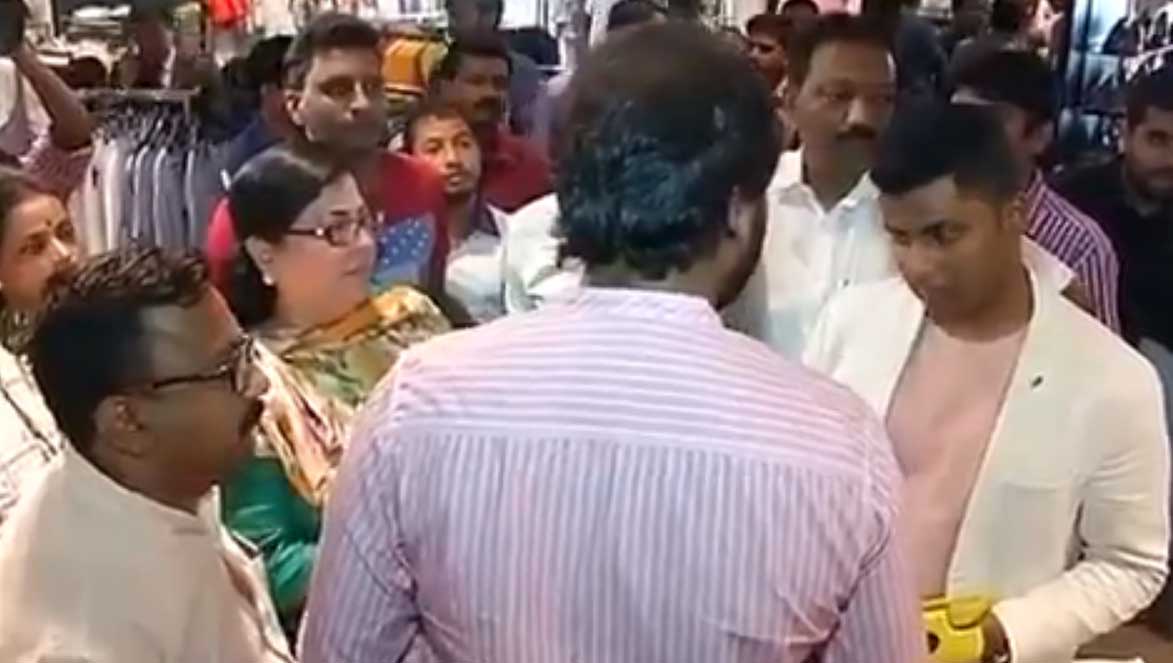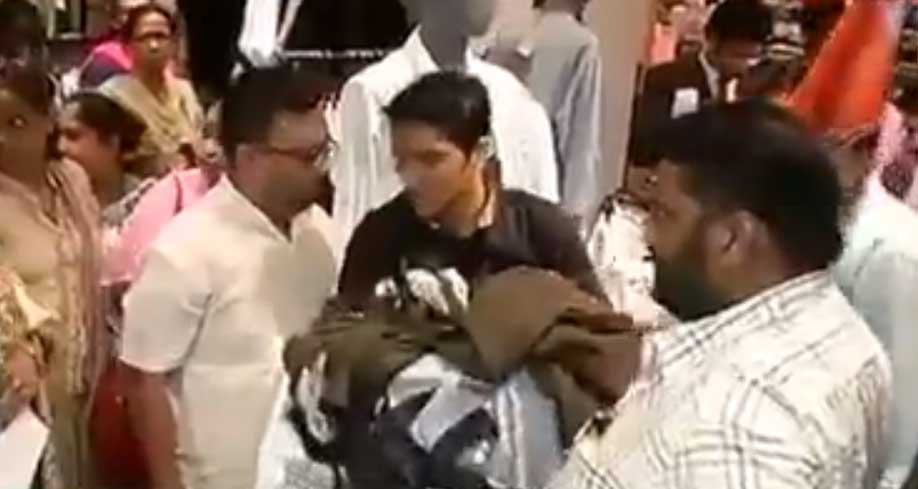Indo-US-Afghan collusion hinders peace
Asif Haroon Raja
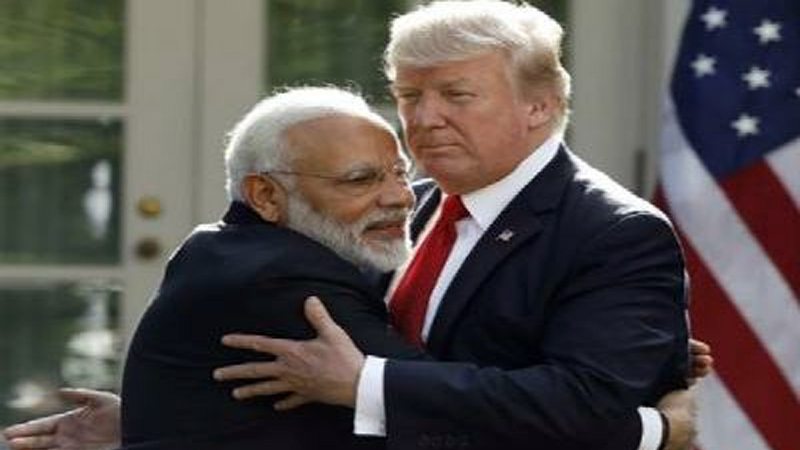
Pakistan’s strained relations with India-Afghanistan
Pakistan’s bilateral relations with its eastern and western neighbours severely deteriorated after Narendra Modi led BJP took over power in June 2014. From 2015 onwards the two arch rivals have been engaged in low-intensity war. The Line of Control and Working Boundary in Kashmir has been kept bloody and on the boil by India. Terrorism in Baluchistan and FATA that had been controlled has been reinvigorated by India. She is resorting to covert war, water terrorism and hybrid war in collusion with Afghanistan. Nefarious activities of the duo are fully backed by USA and Israel.
Indian Prime Minister Modi used anti-Pakistan slogans for rallying the support of radicalized Hindus during the last state elections in India and later for national elections. He blamed Pakistan to hide his internal weaknesses and socio-economic failures. Ashraf Ghani-Abdullah Unity Government in Kabul has also constantly blamed Pakistan to camouflage its failure of establishing its writ in eastern and southern Afghanistan.
Despite the baseless allegations, the Pakistani ruling elite continues with its efforts to engage both the neighbours constructively for regional peace and prosperity and has considered the policy of appeasement as the best option to keep the two antagonists as well as the USA in good humour. Though Islamabad did its best to engage constructively with both New Delhi and Kabul, yet it failed due to Modi’s domestic political priorities and President Ghani’s internal political and security challenges.
RAW-NDS collusion
The bloody terrorist attacks in Lahore in February 2017 followed by another attack on a Sufi shrine in Sindh sponsored by RAW-NDS forced Pakistan to launch Operation Raddul Fasaad to complement Operation Zarb-e-Azb to destroy the terrorist sanctuaries located on Afghanistan-Pakistan border as well as sleeping cells in urban centres and to nab facilitators and handlers. In addition, Pakistan intensified its border management undertakings. The two main border crossings at Torkhum and Chaman were closed and border management improved to prevent infiltration.
In April 2017, Ehsanullah Ehsan, spokesperson of the Tehreek-e-Taliban’s (TTP) splinter group Jamaat-ul-Ahrar, surrendered to Pakistan Army. He claimed that RAW and NDS were supporting terrorist groups by imparting training and providing funds, weapons, equipment and intelligence to subvert the internal security of Pakistan. Pak Army is now fencing the entire length of western border much to the chagrin of USA, India, Afghanistan, the three states sponsoring terrorism in Pakistan. Concurrently, Islamabad is endeavouring to convince the Taliban to hold talks with Unity regime in Kabul.
BJP’s hate-filled politics
The biggest problem while dealing with New Delhi is the prevalent xenophobic domestic Indian political atmosphere. From 2017 till May 2019 elections, Premier Modi used warmongering as a tactic for mustering the support of radicalized hawkish Hindu voters and to win the elections comprehensively. With this objective, his party adopted a vicious policy against the Indian Muslims.
The BJP’s hate-filled politics against the minorities, particularly the Muslims, due to which lynching of Muslims and low-caste Dalits for eating beef and slaughtering and trading in cattle had risen, adding to the anxiety of India’s 170-million-strong Muslim population, didn’t dent BJP vote bank or the popularity of Modi among near 80% Hindus. Under Modi, several cities with names rooted in India’s Islamic Mughal past have been re-named, while some school textbooks have been changed to downplay Muslims’ contributions to India. The trend of marrying Muslims girls by Hindus is on the increase and so is the process of Hinduization.
Kashmir imbroglio
Kashmir is the bleeding wound of India where its 750,000 are pinned down since 1990. After the martyrdom of Burhan Wani in July 2016, Indian security forces and the RSS gangs unleashed a reign of terror and employed all sorts of horribly cruel tools including pellet guns to crush the movement. The innocent Kashmiris have been persistently suffering from the brutality of the Indian armed forces. After Pulwama incident, the level of atrocities has increased. Despite the worst type of state terrorism and human rights abuses, the Indian civilian and military law enforcement agencies have failed to restore the writ of the state in the Indian Occupied Kashmir (IOK). The demoralization among the lower ranks has set in as was seen in 2004-05 and cases of suicides are multiplying.
Modi has made plans to rob IOK of its special status by revoking Article 370. He also has devious plans up his sleeves to change the demography of IOK by settling Hindu Pundits, Indian retired officers and soldiers and Kashmiri refugees; and also to carry out ethnic cleansing of the Kashmiri youth or force them to leave IOK.
Kulbushan discomforts India
Another major irritant which has greatly upset India is the arrest of Indian Naval Officer, Commander Kulbushan Sudhir Jadhav on March 3, 2016, in Baluchistan. He had been working for RAW at Chahbahar since 2003. The death sentence awarded to him by the military court in 2017 has further disturbed RAW and Indian hawks. Kulbushan admitted that he was involved in terrorism and other subversive activities and had established big networks in Baluchistan and Karachi. Indians have been seeking his release but Pakistan has not relented. This could be one reason for India’s constant browbeating tactics and refusing to talk with Pakistan.
Hindutva
The other reason is BJP’s penchant for Hindutva. The resumption of a dialogue between New Delhi and Islamabad is not acceptable to the preachers and followers of Hindutva.
India’s leniency toward Hindu terror groups
While India has all along accused Pakistan of abetting terrorism without providing a shred of evidence and has constantly pressed Pakistan to punish the proscribed groups like Jaish-e-Muhammad, Lashkar-e Taiba and Jamaatud Dawa, allegedly involved in terrorism in India and IOK and has succeeded in blacklisting them, India has always been lenient towards its own Hindu terrorists groups which over 1000.
On June 13, the Bombay High Court granted bail to the accused – Dhan Singh, Lokesh Sharma, Manohar Narwaria and Rajendra Chaudhary, who were in prison since 2013. Four Hindu suspects, who were prime accused in the 2006 terror bombing case that killed 37 people in a Muslim town of Malegaon.
The serial bomb blasts near a mosque had also injured 100 people. Local police initially arrested nine Muslims, accusing them of engineering blasts. But, when the probe was shifted to the National Investigation Agency (NIA), it concluded that the blasts were carried out by the Hindu extremists.
In connection with another terror attack in Bhopal in 2008, Sadhvi Pragya Singh Thakur and former Lt Col Srikanth Purohit were arrested in connection with the incident. Both of them are out on the bail. Thakur recently won parliamentary elections, she contested on the ruling BJP ticket, from Bhopal.
Swami Aseemanand (real name Naba Kumar), linked to RSS is an ideological mentor of BJP. He and three other co-accused Lokesh Sharma, Kamal Chauhan and Rajinder Chaudhary were blamed for three terror attacks. All four who had confessed their crimes were acquitted early this year by an anti-terror court in Haryana in the February 18, 2007 bombing of the Samjhota Express that left 86 people dead, mostly Pakistanis. Last year Aseemanand was among five men acquitted in the 2007 blast in Hyderabad’s Mecca Masjid. In 2017, he was acquitted in the Ajmer Dargah blast case. An Indian court has now ordered the release of four Hindu suspects, who were prime accused in the 2006 terror bombing case in Malegaon.
It has now been amply proved that the much-publicized Mumbai attacks on November 26, 2008, was an in-house affair. Till today, India has consistently blamed Pakistan and has refused to open dialogue until and unless Pakistan agrees to keep terrorism over the issue of Kashmir.
Books written on this subject – namely ‘Betrayal of India’ by Elios Davidson, ‘The Attack on Mumbai’ by Vir Sanghvi, and ‘’The Siege’ by Cathy Scott-Clark & Adrien Levy have laid bare the truth that it was a joint venture of RAW-Mossad and CIA to discredit Pak Army and Kashmiri movement and to get Pakistan declared a terrorist state. And yet India has never been questioned. Same is the case with false flag operation in Udhampur, Pathankot, Uri and Pulwama, all engineered to hide the cruelties of India in IOK and to dub the liberation movement in Kashmir as Islamic radicalism duly supported by Pakistan.
Pakistan has ample proofs
With Kulbushan and Ehsanullah have divulged the entire racket of RAW-NDS against Pakistan with its tentacles spread from Iran, Pakistan’s coastal belt to Afghanistan, what more proof is needed to prove that the duo backed by the USA are the real source of instability in Af-Pak region and much-maligned Pakistan is the victim of terrorism.
India’s jingoism
The biggest problem while dealing with New Delhi is the prevalent jingoistic domestic Indian political atmosphere. Premier Modi, during the last year state elections campaign, used warmongering as a tactic for mustering the support of radicalized hawkish Hindu voters. The BJP secured a majority in the important state elections and constituted its governments. The campaign, however, amplified anti-Pakistan feelings in Indian society.
BJP’s landslide victory
Modi led BJP surprised the world by bagging 303 votes in the Lower House of 543. The BJP’s main rival Congress, couldn’t win a single seat in 13 states and five union territories. Congress managed to secure 52 seats only which was an 8-seat improvement over last elections. Rahul Gandhi – the great-grandson, grandson and son of three premiers, even lost his own seat in Amethi, a family bastion but managed to win a seat in Kerala. Congress BJP’s landslide win has crushed the Gandhi dynasty’s comeback hopes. Rahul tamely threw in his towel after the election results were announced.
Modi’s victory attributable to Pakistan bashing
Modi achieved a landslide victory because of his Pakistan rhetoric, aggressive policies against Indian Muslims and Kashmiri Muslims, and lies and false promises and not on performance. He won despite being likened to Hitler, a compulsive liar and a “gutter insect”, alleged corruption in a Rafael defense deal, the desperate plight of farmers, the lackluster economy and humiliations suffered at the hands of Pakistan in September 2016 on account of fake surgical strike, and then in the aftermath of stage-managed Pulwama attack in February 2019. In fact, killings of over 40 soldiers in Pulwama on February 14 incensed the Hindus, escalated Hindu extremism and further bolstered BJP’s votes.
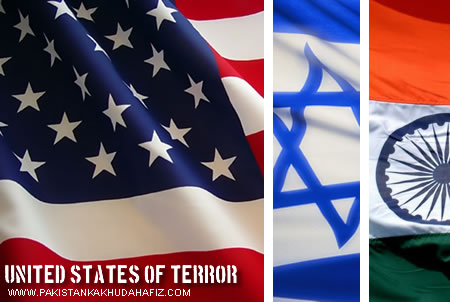
The air intrusion in Balakot on February 27 was a complete fiasco since the Mirage 2000s with Israel-made Spyke missiles could uproot few pine trees only, but Modi helped by Indian media claimed it as a roaring success, falsely claiming destruction of Jaish-e-Muhammad camp and killing over 300 militants. He roared, “Wherever the terror groups and perpetrators may hide, our security forces will flush them out and punish them. Every drop of blood of our slain soldiers shall be avenged.”
These high-sounding rhetoric made the Indian public ecstatic and hysteric. Exploiting their sentiments, Modi named himself as the Chowkidar (Watchman) and the only who can defend India and make it great.
Indo-Afghan hostility hinders peace
Surely, the continuity of such collusive nefarious activities of NDS-RAW would not be tolerable for the sake of dialogue process. Although the Afghan Unity Government constantly levels baseless allegations against Pakistan to camouflage its own failure, yet Islamabad is determined to engage Kabul for cordial bilateral relations between Afghanistan and Pakistan.
India has inflicted tens of thousands of cuts on the body of Pakistan and has openly expressed her desire to break Pakistan into four parts, and yet Pakistani leadership is bending over backwards to resume dialogue with India which has been wholly unproductive due to Indian intransigence and deep-rooted hatred.
Will Modi fulfil his promises?
Now that Modi is firmly in the saddle, will he fulfil his unaccomplished promises? Will he be able to make India Great as claimed by him? Will he be able to tackle the economy and unemployment which has surged up particularly among the women? Will he create a higher number of jobs needed? Can he address wealth inequalities? The agriculture industry is also in an awful state. Drought, low prices of agriculture products and heavy debts have driven thousands of farmers to commit suicide. The country’s waterways are filthy and India is home to 22 of the world’s 30 most polluted cities. Open latrines and millions sleeping on footpaths are other unresolved problems. Religious minorities – including India’s 170 million Muslims – are terrified and feeling insecure.
Will he continue persecuting the minorities or balm their wounds to integrate the heterogeneous society which is an ethnic museum? Will he exploit his brute majority to revoke Article 370 and make IOK integral part of India, or allow the Kashmiris their right of self-termination? Will he continue to tread on the beaten path of jingoism, whipping up war hysteria and keeping the people mesmerized in a mythical world in pursuit of his mission to make Pakistan a compliant state, and become a world power, or else adopt a saner approach and adopt a reconciliatory approach in the overall interest of South Asia?
India has once again shown her mindset by trying to influence FATF to blacklist Pakistan. China, Turkey and Malaysia thwarted the baleful move. India can never achieve her ambitions by beating war drums and adopting a confrontationist approach.
It is most unfortunate that the US-Israel-Afghan-India nexus is a collection of spoilers who have chosen the path of hostility, which is bound to lead to catastrophic results. Sudden rise in temperature in the Persian Gulf stoked by the USA has added to the gravity of the situation. Conversely, Russia-China-Central Asian Republics-Pakistan and ASEAN vie for co-existence, peace and collective prosperity and are placing their hopes in BRI and CPEC.
Afghanistan and Pakistan have suffered a great deal on account of wars imposed by outsiders in Afghanistan and making Pakistan a frontline state. Both earnestly need peace. No peace is possible in the region without the resolution of the dispute in Kashmir and end of the war in Afghanistan. Therefore, it’s imperative that Russia, China, Turkey, Iran should play a constructive role in resolving the two issues.
Modi seems to have climbed down the high horse he was riding and has asked Pakistan to rebuild trust and develop enabling environment for progress in ties. This whiff of fresh air has come in response to two letters written by Imran Khan. He, however, once again reiterated that for cooperative ties, it was important to build an environment free of terror, violence and hostility. Coming months will indicate the seriousness of Modi’s apparent desire for re-engagement.
To conclude, the mistrust hinders constructive engagement. Pakistan, India, and Afghanistan need to appreciate the usefulness of the connectivity between the neighbours for the prosperity of their people. All three should disperse the clouds of distrust and hatred and build trust, bring in amity and cooperation. Enduring peace and stability in South Asia hinge on the resolution of the long-pending dispute of Kashmir and end of the war in Afghanistan.
The writer is a retired Brig, war veteran, defence analyst, columnist, author of five books, Vice Chairman Thinkers Forum Pakistan, Director Measac Research Centre, member CWC and Think Tank Pakistan Ex-Servicemen Society, member Executive Council Tehreek Jawanan Pakistan. asifharoonraja@hotmail.com

